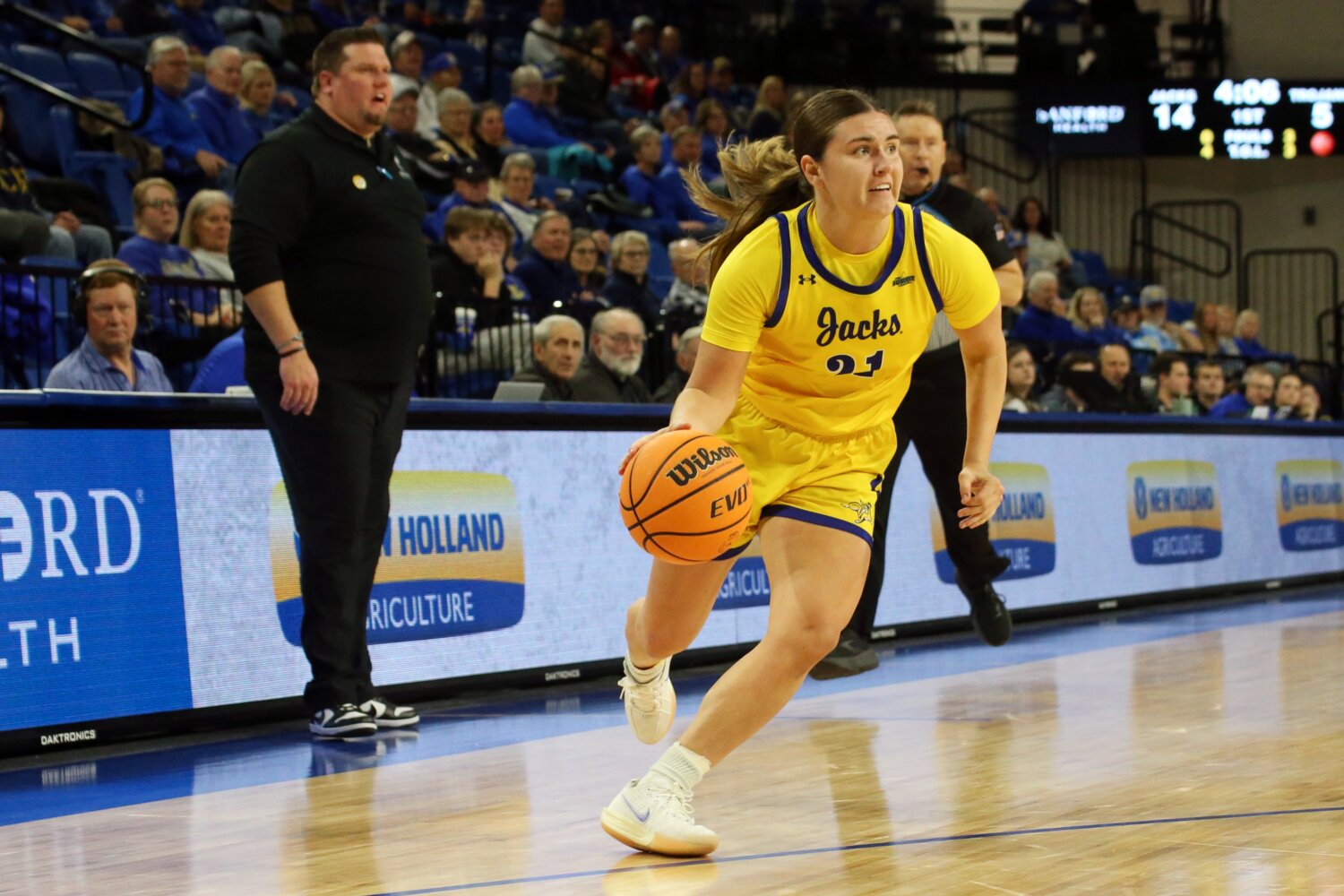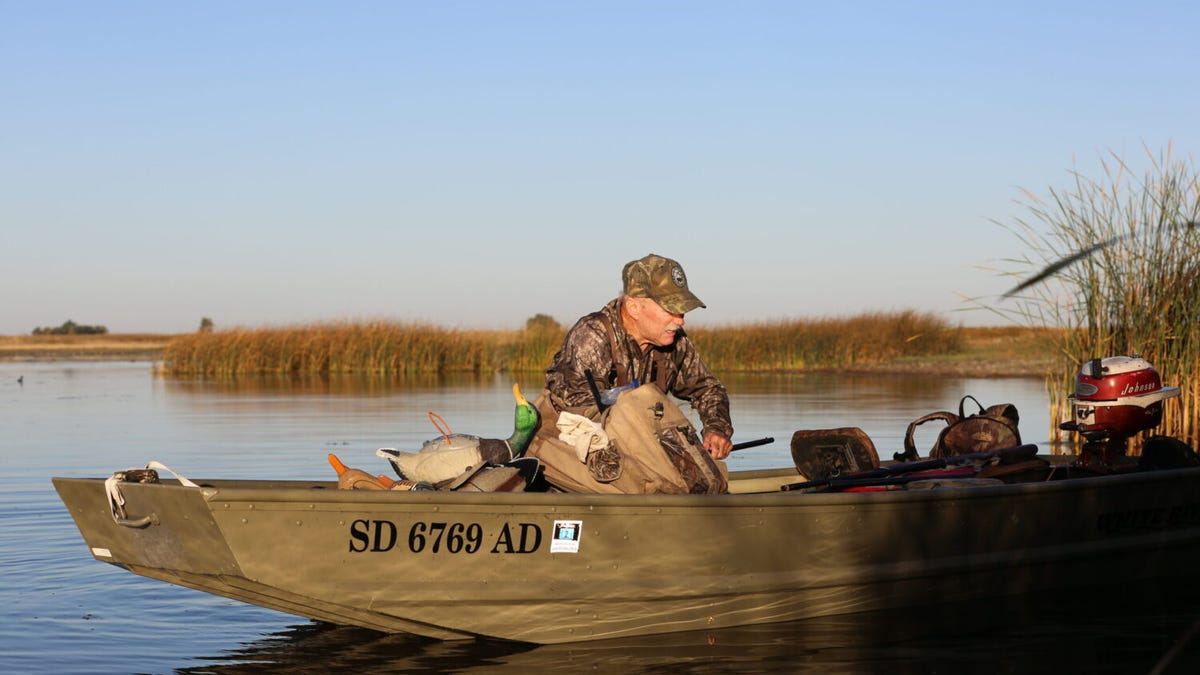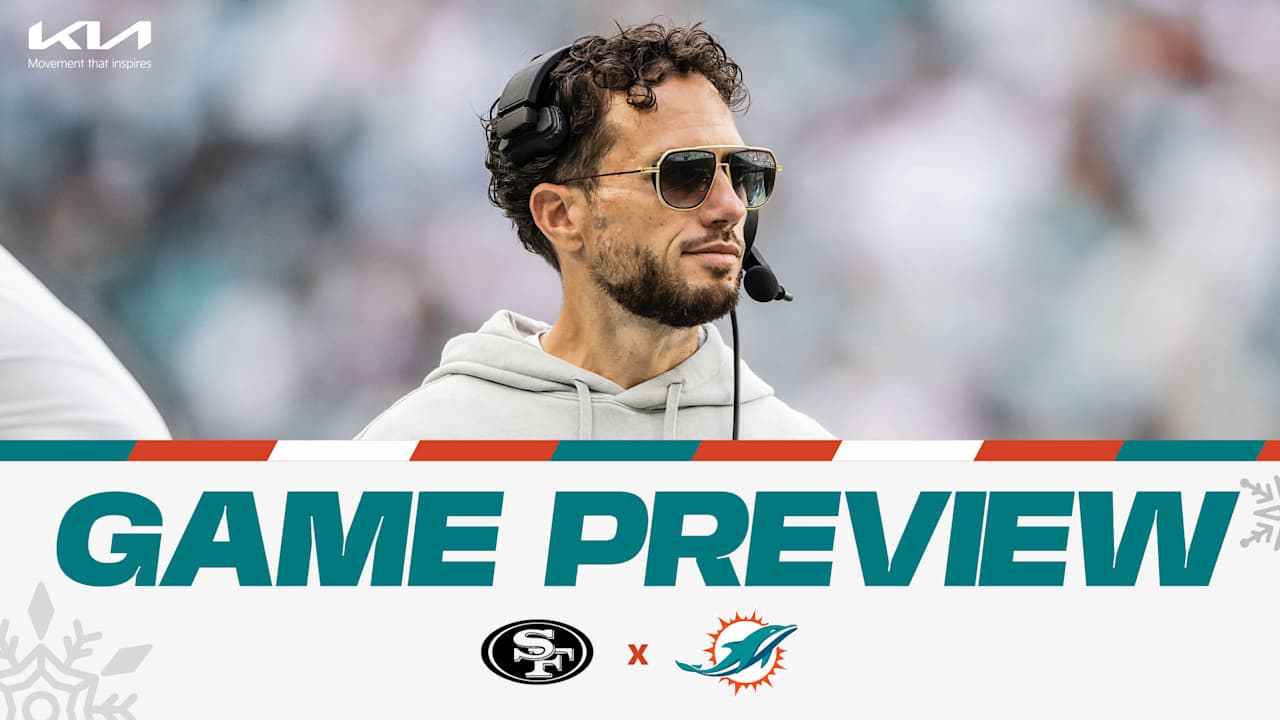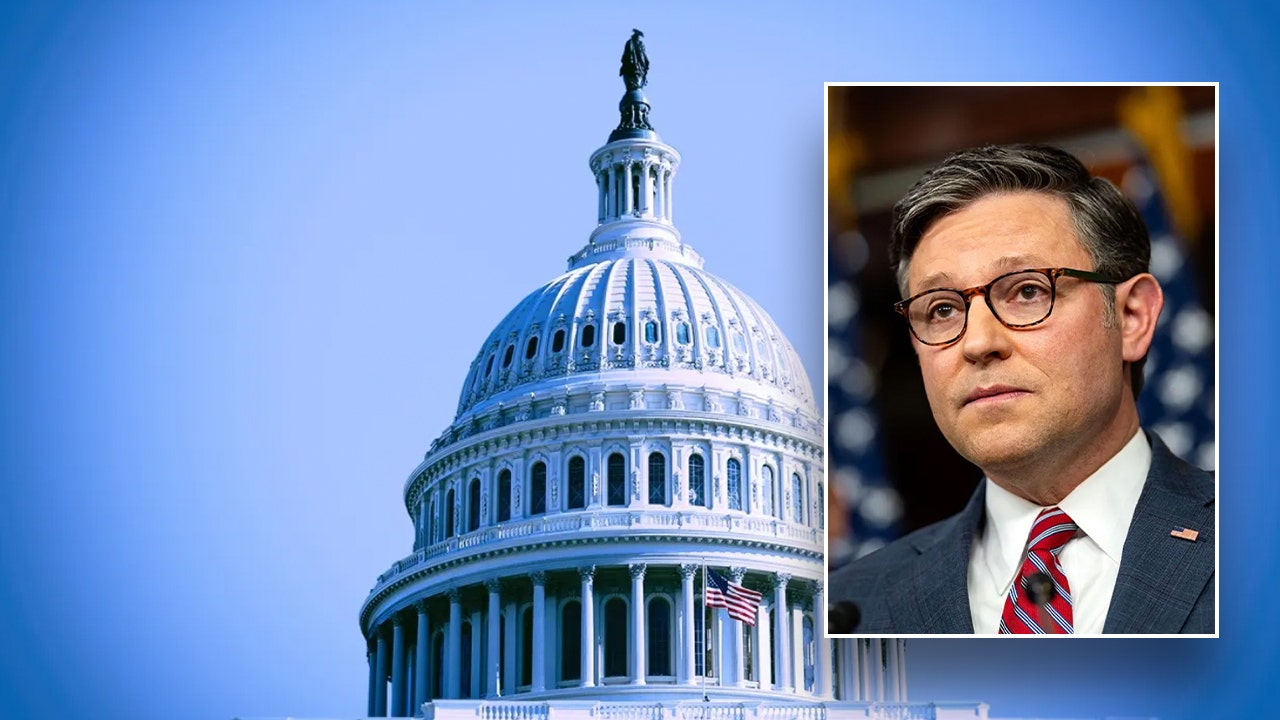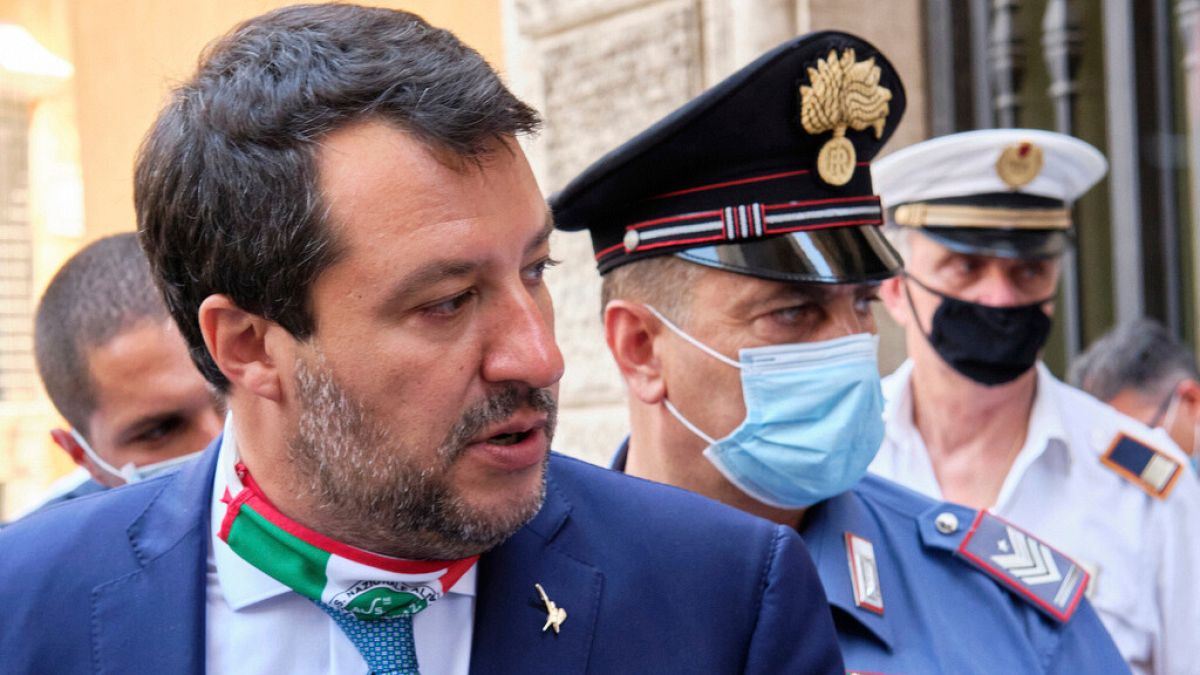North Dakota
South Dakota State enters conference play undefeated
/cloudfront-us-east-1.images.arcpublishing.com/gray/NXC7COEDCNF6LPQEFVVK4DCTAE.bmp)
SIOUX FALLS, S.D. (Dakota News Now) – South Dakota State took care of business in Minneapolis at Target Field, winning 70-7 over Drake. While Drake struck first, this game was never in question after the Jacks got going on offense. Mark Gronowski threw for five touchdowns and ran another one in himself for six on the day.
The win is the cap on the Jackrabbits’ non-conference schedule, as they gear up to play North Dakota at the end of the month. Head Coach Jimmy Rogers said while there’s still some things he’d like to see cleaned up before then, this week was a great opportunity to get better.
“Some of our errors, they’re not necessarily execution from another team as much as they are maybe mental busts, or just not executing the proper technique when we have the opportunity to. We have an opportunity to get better, we have unbelievable leadership,” Rogers said.
South Dakota State will have the next week off before they host North Dakota the week after. The Fighting Hawks are coming off a loss on the road to Boise State, but are still expected to be one of the better teams in the Missouri Valley this year.
Copyright 2023 KSFY. All rights reserved.

North Dakota
Port: As the federal government teeters on edge of shutdown, North Dakota has no vote

MINOT — Barring some late-breaking legislation, the U.S. federal government will shut down within hours.
As this drama unfolds in Washington, North Dakota has no voice in the U.S. House of Representatives. The legislative body where, per Article I, Section 7 of the U.S. Constitution, all bills raising revenue must originate.
As I write this, Speaker Mike Johnson, a Republican,
is confident
they’ll avoid a shutdown despite funding agreements getting scuttled twice in recent days. Once thanks to agitation from billionaire Elon Musk and once again thanks to a group of House Republicans who refused to agree to raise the national debt ceiling without significant spending cuts.
Given the turmoil in the House Republican caucus and the narrow margins of the Republican majority, any potential deal may pass by only a scant few votes. Which is another way of saying that, in this fraught moment, no side in the debate has any votes to spare.
But a vote from North Dakota won’t be among them. That’s because former U.S. Rep. Kelly Armstrong resigned his seat in the House on Dec. 14 so he could be sworn in as governor on Dec. 15, which
Article V, Section 5
of the North Dakota Constitution requires. Meanwhile, Rep.-elect Julie Fedorchak is waiting in the wings, but she was elected to the next Congress, not this Congress, so she cannot be seated.
I actually spoke to Armstrong about this drama
in April.
Given the resignations of other House Republicans, it seemed at that time the GOP could lose control of the House before the current Congress ended. Armstrong was confident that the party would replace members through special elections between now and then and he was right. The GOP held onto its majority, slim as it is.
As for Armstrong’s vacancy? “After June 11, we will be keeping the speaker’s office informed,” he also told me at the time, referring to the primary election.
“It’s confusing for folks because they don’t know who is our representative right now,” Fedorchak told me when I spoke to her about it.
She’s feeling flummoxed because there is nothing she can do. Fedorchak was not elected in a special election to replace Armstrong in this Congress. She was elected to fill North Dakota’s at-large seat in the next Congress.
By law, she cannot be seated in this Congress. The next Congress won’t be seated until January. Also, unlike senators, members of the U.S. House can’t be appointed. Outside of holding a special election, there’s no mechanism to fill Armstrong’s vacancy.
This circumstance isn’t anything Armstrong or Fedorchak can remedy. What’s caused it is constitutional law and dysfunction in Washington. North Dakota’s constitution necessitated Armstrong’s resignation from the House so he could be sworn in as governor. The U.S. Constitution prohibits North Dakota from appointing an interim replacement.
Alyssa Goelzer/The Forum
“This isn’t even really a budget fight,” Armstrong spokesman Mike Nowatzki told me. “It’s a CR fight. Congress should do its job and not govern by crisis.”
“He informed them when he was running for governor that this was a possibility. It shouldn’t surprise them that he had a hard out on Dec. 14,” Nowatzki added.
Which may be something for the Legislature to consider going forward. Can the new governor be sworn in at a later date? The timing is already awkward. The state constitution also mandates that lawmakers begin their regular session in January after an election. It also requires an organizational session in mid-December, complete with a budget address from the governor. This year, that was Doug Burgum, who was obliged to deliver an executive budget to lawmakers
as a lame duck just days from leaving office.
Armstrong’s feeling “is that having the governor be sworn in on the day before a legislative session wouldn’t be a good idea,” Nowatzki told me, referring to a possible delay in the swearing-in.
“It’s already a mad scramble,” Nowatzki added. “It would be exponentially more difficult.”
The situation with North Dakota’s at-large House seat is unusual. But the outgoing governor delivering a budget as a lame duck? That happens every time we get a new governor.
This timeline could be reshaped to serve the public better, but that’s easier said than done. Moving the swearing in date to a later time might mean moving the legislative session to a later start. I don’t sense there would be much appetite among lawmakers to do it, and even if there were, it would be a change to the state constitution that would have to be ratified by a vote of the people.
Meanwhile, in Washington, as Republicans fight with Democrats (and other Republicans) over the budget, North Dakotans have no official say in the matter.
North Dakota
North Dakota Outdoors: Look back at ND spearfishing

Submitted Photo
Decoying a pike isn’t the same as decoying ducks or holding a draw on a deer. Photo by Ashley Peterson, NDGF.
Have you ever been darkhouse spearfishing for pike? It’s relatively new compared to most outdoor recreation, having started a mere 25 years ago, but for those who have taken the opportunity it’s hard to compare.
I remember the first time I went spearfishing at Spiritwood Lake. Sitting still in a darkhouse was like nothing I’d ever done before. I’m no expert but when the first northern drifted into the decoy as I sat undetected, I locked up. Not surprisingly, I missed it.
Maybe it’s close to the thrill of calling turkeys into a decoy? Others might describe the rush like sitting undetected in a tree stand archery hunting for deer. I can attest it’s a rush of its own unique draw.
Decoying a pike isn’t the same as decoying ducks or holding a draw on a deer. None of those take place in the middle of a frozen lake with nothing but ice and cold water between you and the pike.
If you’ve ever watched a pike come in and attack a decoy, it’s incomparable. To get to that point is not easy. The combination of cold, snow and dark could be why the popularity of darkhouse spearfishing hasn’t, and likely never will, rival the sun, waves and water of summer fishing?
Looking at last year’s spearfishing statistics prove how a warmer winter with poor ice conditions results in lower participation and success.
Greg Power fisheries division chief highlights a few notes:
– 3,109 individuals registered – 2,018 residents, 1,091 nonresidents from 29 states including 716 from Minnesota (23%); despite an open winter, the number of registrants were similar to the previous winter, which was greatly impacted by extreme cold weather and snowfall.
– 9,181 northern pike were harvested, the lowest number since 2010-11 and less than one-third of that harvested in 2017-18 (the record year).
– Average spearer was 42.8 years old and 88% were male.
– Survey respondents indicated participation in DHSF on a record 138 water bodies (up 32 from 2021-22).
– DHSF effort of the top 15 lakes accounted for nearly 75% of the effort with Sakakawea accounting for about 35% of the total effort (which basically equaled the effort of the next 10 water bodies).
– Top 14 lakes accounted for more than 73% of the DHSF pike harvest with Sakakawea accounting for 28% of the total harvest. The top four waters (Sakakawea, Devils Lake, Twin (LaMoure) and Horsehead lakes) accounted for 56% of the total pike harvest.
– Median and mean weights of the largest pike reported harvested by respondents were 10 and 10.5 pounds respectively. These metrics are the highest ever recorded.
– 2022-23 was the first winter that the taking of walleye (in addition to pike and rough fish) during DHSF was legal for Devils Lake, Stump Lake and the Missouri River System including lakes Sakakawea and Oahe. For this past winter (23-24), the following number of spearers harvested the following number of walleye: Sakakawea (88 spearers and 218 walleye), Devils Lake (26 spearers and 54 walleye), Missouri River (three spearers and three walleye) and Stump Lake(one spearer and one walleye).
2024-25 ND darkhouse spearing
Individuals required to possess a valid fishing license (age 16 and older) to darkhouse spearfish must first register online at the North Dakota Game and Fish Department website, gf.nd.gov.
Darkhouse spearing is allowed for all anglers with a valid fishing license and for youth under age 16.
Northern pike and nongame fish are the only legal species statewide, while walleye can be speared at Stump Lake and the Devils Lake complex south of U.S. Highway 2 and the Missouri River System (including lakes Oahe and Sakakawea and the Missouri River) up to the first tributary bridge.
Spearers and anglers are reminded that materials used to mark holes must be in possession as soon as a hole greater than 10 inches in diameter is made in the ice.
Registration and full details can be found on the Game and Fish Department’s website.
North Dakota
Nelson County farmer credited with saving men from freezing to death after crash

MCVILLE, N.D. — Nobody knows the land around North Dakota better than farmers, and that knowledge proved critical after a bizarre car crash in Nelson County.
Sheriff Kurt Schwind said an unnamed farmer’s help was lifesaving after rescue crews called off an initial search for the occupants of the vehicle and nearly halted a second one.
If the second search had been called off, Schwind said, two men likely would have frozen to death.
County dispatch received the call about the crash around 6 a.m. on Dec. 9; the caller became disconnected.
“Says he was sleeping, he was in the car with a couple guys, he was sleeping, woke up they were gone, the vehicle was crashed so he started walking,” Schwind said.
The call came from a refurbished phone, so officers were not able to call the person back, but a cellphone ping brought them to the farmstead.
Bodycam footage obtained by WDAY shows a Nelson County sheriff’s deputy talking with the farmer, who was curious about all of the police activity on his property.
After searching for about an hour and a half, police called off the search until sunrise.
“It was so dark and we had some blowing snow and stuff like that, so it was really hard to see anything at that point,” Schwind said.
When the sheriff returned after sunrise, the farmer showed him something.
“That’s when the landowner realized that this gate had been broken through,” Schwind said.
The tracks the farmer and police followed for a half-mile through a cow pasture were still visible days later. A wire fence was also driven through. It led investigators to the top of a ravine, and several hundred feet below, they spotted a four-door car.
“How they got through there with that BMW is amazing, because we had to use four-wheel drive, and we struggled getting down there,” Schwind said.
At about the same time, Schwind found the man who called 911. He had climbed the ravine and sought shelter in some hay. He had no shoes or coat. He told police he was alone.
“He was in bad shape. As soon as I got him into my vehicle, he had uncontrollable shivering; he was very incoherent,” Schwind said.
As the sheriff raced the man to the hospital, the farmer, who had stayed at the top of the ravine, made another key discovery.
“He got his binoculars out and saw him sitting in the trees,” Schwind said of another man.
It took rescue crews nearly an hour to rescue the second man. According to WDAY StormTRACKER meteorologists, the wind chill was below zero.
“I think if the landowner wouldn’t have met me back over here, that we would have been recovering as opposed to finding,” Schwind said.
The sheriff said the men were traveling from Grand Forks to Devils Lake, but it’s unclear how long they were in the ravine and how they ended up several miles off the main road.
“They both had phones that had charges left in them,” Schwind said. “For some reason, they didn’t call — they only called that one time and didn’t call again.”
While WDAY News was talking with the sheriff for this story, a deputy found a jacket, boots and phone a couple hundred feet from where the first man was found in the hay. What looked like methamphetamine was found in a pill container in the jacket pocket.
The Nelson County Sheriff’s Office plans on presenting the farmer with an award for his lifesaving help.
The Sheriff’s Office is still investigating to determine if the men will face charges.
McVille is about 67 miles southwest of Grand Forks.
Matt Henson is an Emmy award-winning reporter/photographer/editor for WDAY. Prior to joining WDAY in 2019, Matt was the main anchor at WDAZ in Grand Forks for four years.
-

 Politics1 week ago
Politics1 week agoCanadian premier threatens to cut off energy imports to US if Trump imposes tariff on country
-
/cdn.vox-cdn.com/uploads/chorus_asset/file/25782636/247422_ChatGPT_anniversary_CVirginia.jpg)
/cdn.vox-cdn.com/uploads/chorus_asset/file/25782636/247422_ChatGPT_anniversary_CVirginia.jpg) Technology1 week ago
Technology1 week agoInside the launch — and future — of ChatGPT
-
/cdn.vox-cdn.com/uploads/chorus_asset/file/25789444/1258459915.jpg)
/cdn.vox-cdn.com/uploads/chorus_asset/file/25789444/1258459915.jpg) Technology7 days ago
Technology7 days agoOpenAI cofounder Ilya Sutskever says the way AI is built is about to change
-

 Politics7 days ago
Politics7 days agoU.S. Supreme Court will decide if oil industry may sue to block California's zero-emissions goal
-
/cdn.vox-cdn.com/uploads/chorus_asset/file/25546252/STK169_Mark_Zuckerburg_CVIRGINIA_D.jpg)
/cdn.vox-cdn.com/uploads/chorus_asset/file/25546252/STK169_Mark_Zuckerburg_CVIRGINIA_D.jpg) Technology1 week ago
Technology1 week agoMeta asks the US government to block OpenAI’s switch to a for-profit
-

 Politics1 week ago
Politics1 week agoConservative group debuts major ad buy in key senators' states as 'soft appeal' for Hegseth, Gabbard, Patel
-

 Business5 days ago
Business5 days agoFreddie Freeman's World Series walk-off grand slam baseball sells at auction for $1.56 million
-
/cdn.vox-cdn.com/uploads/chorus_asset/file/23951353/STK043_VRG_Illo_N_Barclay_3_Meta.jpg)
/cdn.vox-cdn.com/uploads/chorus_asset/file/23951353/STK043_VRG_Illo_N_Barclay_3_Meta.jpg) Technology5 days ago
Technology5 days agoMeta’s Instagram boss: who posted something matters more in the AI age

